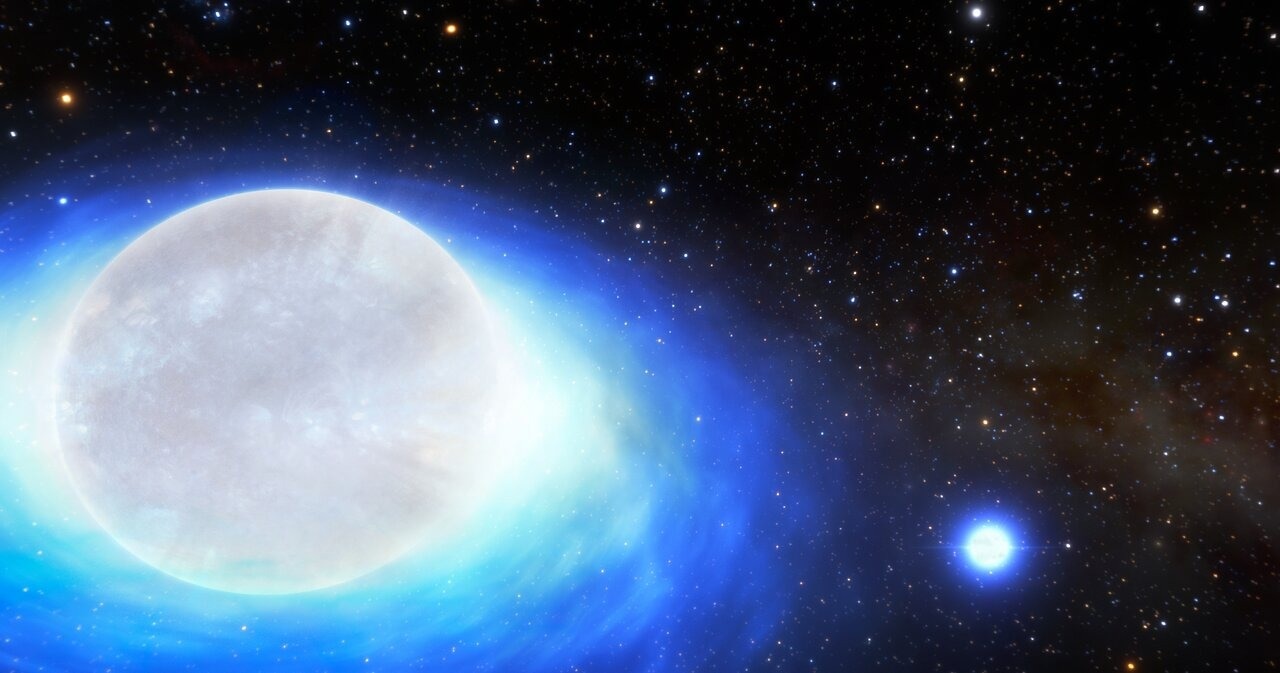Astronomers, using data from the SMARTS 1.5-m Telescope at the Cerro Tololo Inter-American Observatory (CTIO), a Program of NSF’s NOIRLab, have presented the first verified detection of a star system that will one day develop into a kilonova—the ultra-strong, gold-producing explosion made by blending neutron stars.

Image Credit: NOIRLab
Such systems are so phenomenally unusual that only around ten are believed to exist in the whole Milky Way.
Astronomers utilizing the SMARTS 1.5-m Telescope at Cerro Tololo Inter-American Observatory in Chile, a Program of NSF’s NOIRLab, have disclosed the first example of a phenomenally unique kind of binary star system.
This one has all the correct conditions to ultimately activate a kilonova—the ultra-powerful, gold-producing explosion made by the collision of neutron stars.
This exceptional system, called CPD-29 2176, is situated around 11,400 light-years from Earth. It was initially discovered by NASA’s Neil Gehrels Swift Observatory.
Later observations with the SMARTS 1.5-m Telescope enabled astronomers to infer the orbital characteristics and kinds of stars that compose this system—a neutron star made by an ultra-stripped supernova and a nearby orbiting huge star that is in the process of turning into an ultra-stripped supernova itself.
An ultra-stripped supernova is thought to be the end-of-life explosion of a huge star that has had much of its outer atmosphere removed by a companion star. This class of supernova misses the explosive force of a conventional supernova, which would differently “kick” a close-by companion star out of the system.
The current neutron star would have to form without ejecting its companion from the system. An ultra-stripped supernova is the best explanation for why these companion stars are in such a tight orbit. To one day create a kilonova, the other star would also need to explode as an ultra-stripped supernova so the two neutron stars could eventually collide and merge.
Noel D. Richardson, Study Lead Author, Embry-Riddle Aeronautical University
As well as representing a breakthrough of an exceedingly rare cosmic oddity, determining and studying kilonova progenitor systems like this can assist astronomers in untangling the puzzle of how kilonovae develop. This helps gain new insight into the origin of the elements present in the Universe.
For quite some time, astronomers speculated about the exact conditions that could eventually lead to a kilonova. These new results demonstrate that, in at least some cases, two sibling neutron stars can merge when one of them was created without a classical supernova explosion.
André-Nicolas Chené, Study Co-Author, Astronomer, NOIRLab
Chené stated, “We know that the Milky Way contains at least 100 billion stars and likely hundreds of billions more. This remarkable binary system is essentially a one-in-ten-billion system. Prior to our study, the estimate was that only one or two such systems should exist in a spiral galaxy like the Milky Way.”
Although this system consists of all the correct things to finally develop a kilonova, it is the job of future astronomers to study that event. It will take a minimum of one million years for the huge star to end its life as a titanic supernova explosion and outrun a second neutron star.
This novel stellar remnant and the pre-existing neutron star will slowly move in a cosmic ballet, thereby gradually losing their orbital energy as gravitational radiation. When they finally combine, the kilonova explosion will generate much stronger gravitational waves and leave behind a huge amount of heavy elements, such as gold and silver.
This system reveals that some neutron stars are formed with only a small supernova kick. As we understand the growing population of systems like CPD-29 2176 we will gain insight into how calm some stellar deaths may be and if these stars can die without traditional supernovae.
Noel D. Richardson, Study Lead Author, Embry-Riddle Aeronautical University
Journal Reference:
Richardson, N. D., et al. (2023) A high-mass X-Ray binary descended from an ultra-stripped supernova. Nature. doi.org/10.1038/s41586-022-05618-9.